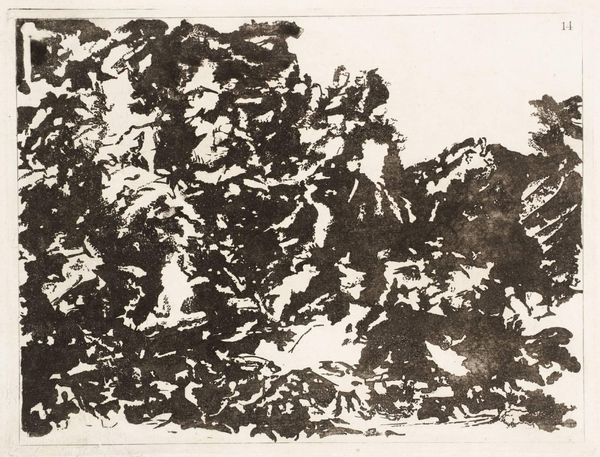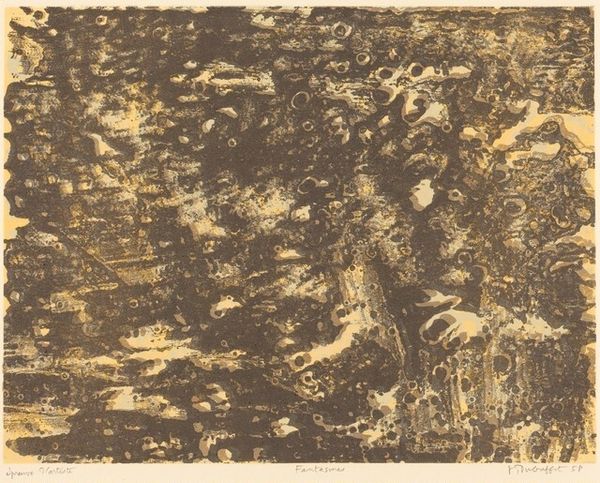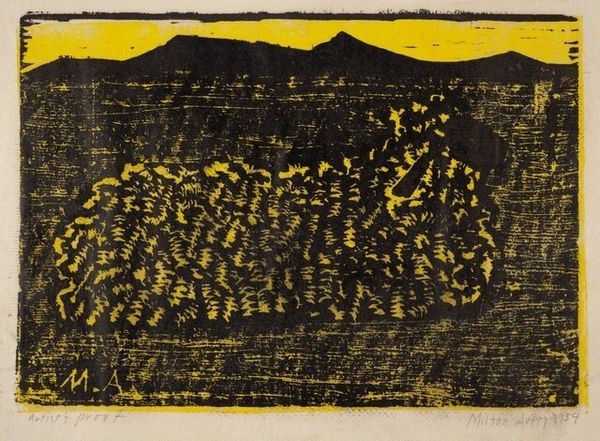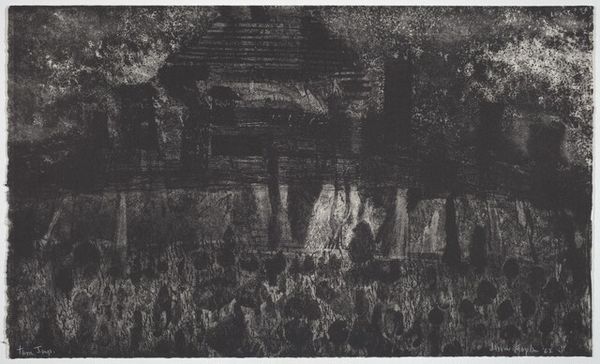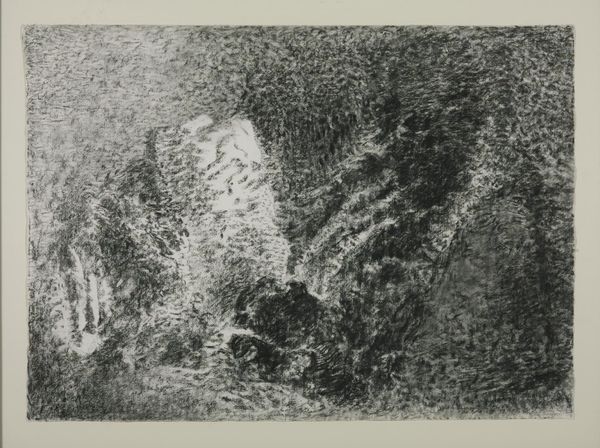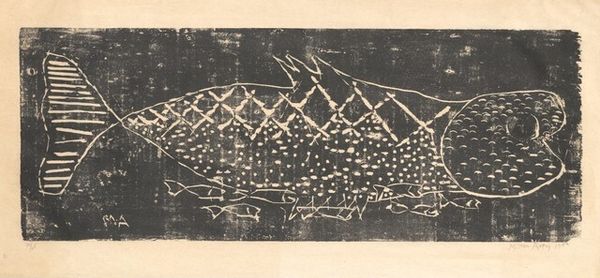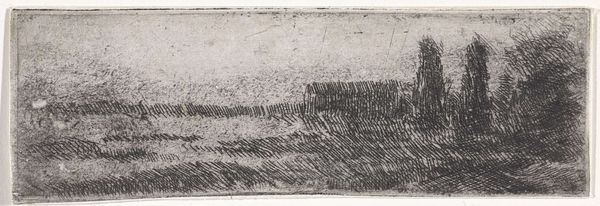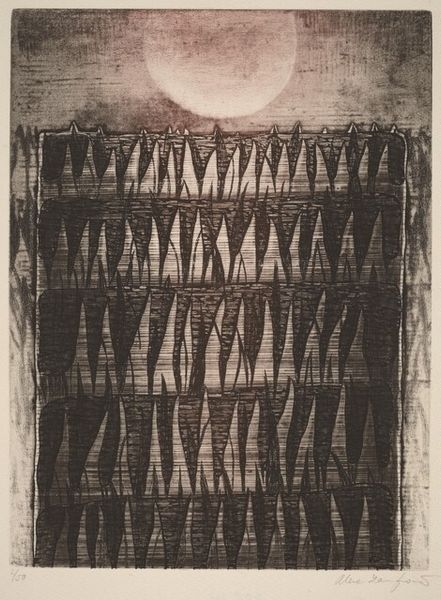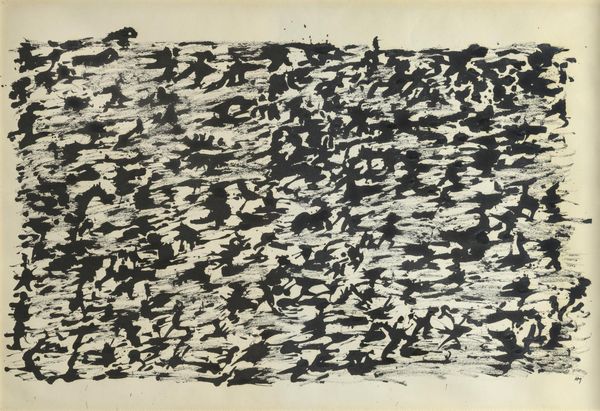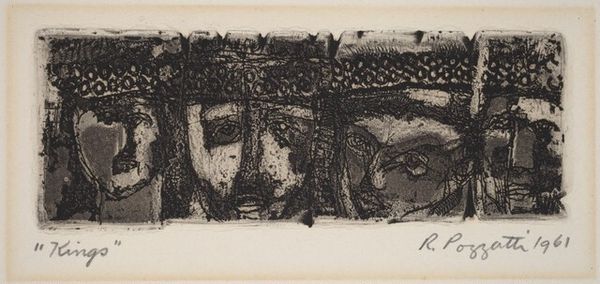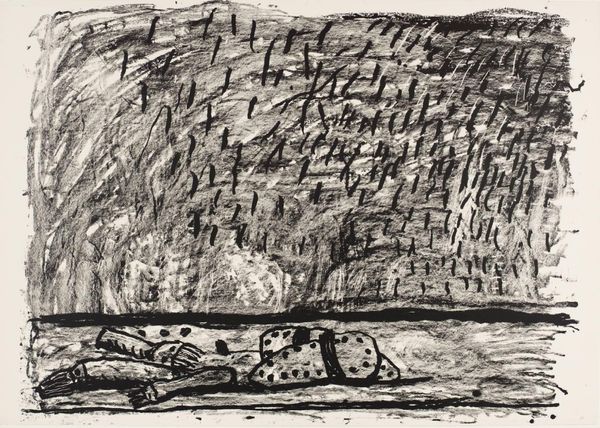
print, woodcut
#
abstract-expressionism
# print
#
landscape
#
figuration
#
woodcut
#
monochrome
Dimensions: image: 24.5 x 35.5 cm (9 5/8 x 14 in.) sheet: 30.5 x 43.8 cm (12 x 17 1/4 in.)
Copyright: National Gallery of Art: CC0 1.0
Curator: At first glance, there's something incredibly dense and textural about this work; it almost feels like an abstraction before I register the form. Editor: I agree. The stark contrast immediately pulls me into the symbolic weight of its monochrome palette. What we have here is Milton Avery's 1954 woodcut print, "Lamb". He manages to evoke such raw vulnerability with so few elements. Curator: Avery was deeply engaged with the art of his time, though resistant to easy categorization. What interests me is how his simplification echoes modernist ideals but the emotional register, especially within the Cold War era, suggests anxiety. Editor: The lamb, of course, is laden with symbolism—innocence, sacrifice. It's a motif stretching back through art history. Even rendered so abstractly, Avery retains its power. Curator: Absolutely. Consider the position within the landscape. It’s almost engulfed by the darkness, flattened by the horizon line; Avery subtly critiques pastoral traditions, highlighting fragility over idealized rural harmony. It makes me think about labor, about exploitation. Editor: Look closer, though, at the way the light catches the lamb’s "wool", the texture so beautifully evoked through the woodcut technique. This seems to represent both comfort and isolation in its textured mark making; Avery isn’t just critiquing; there’s empathy present, too. The repetitive patterns may point at its lack of individuality or social standing, becoming instead an asset. Curator: I find that to be true with the lamb motif in many ways; it has a historical relationship to exploitation, while in Christian art it speaks more broadly to being protected, shielded from worldly conflict. I see the textured mass almost becoming the flock. Editor: Exactly. In many ways this woodcut is a conversation on social identity that is easily projected on many cultural perspectives that hold religious, moral, and economic agency to our lived world today. The context in this visual is really what elevates the composition. Curator: This really has given me a new way of looking at this piece, recognizing a duality that encapsulates both the anxieties and a call for a reexamination of power, representation and being. Thank you for taking the time to illuminate new layers of understanding with this symbolic weight! Editor: It has been a pleasure! I feel now this can carry forth for listeners to have better appreciation for our histories as well.
Comments
No comments
Be the first to comment and join the conversation on the ultimate creative platform.

